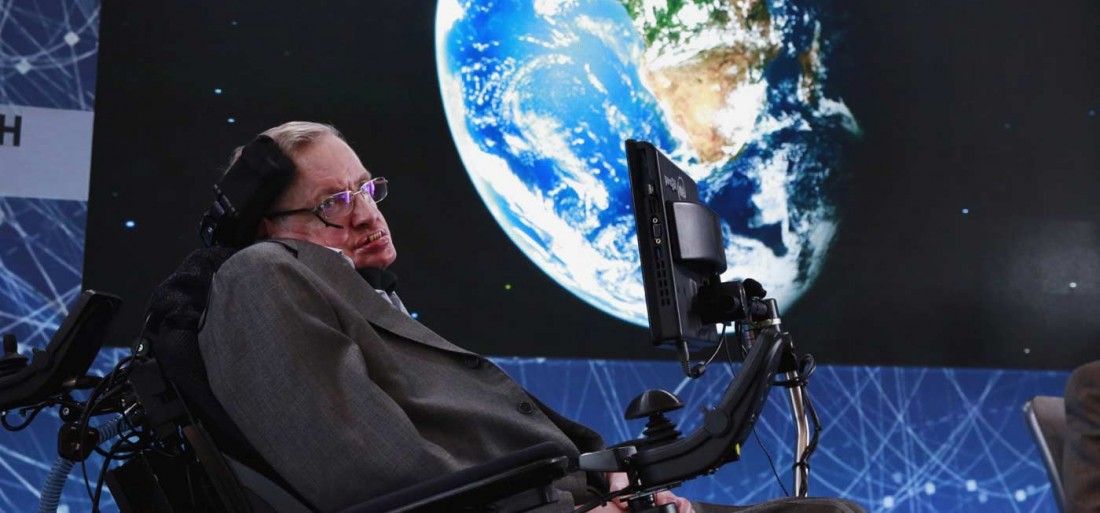7 Things You Didn’t Know About Stephen Hawking
Renowned physicist Stephen Hawking died on March 14, 2018—also known as Pi Day—at age 76. The scientist stands out for his significant contributions to the field of cosmology, the study of the origin and development of the universe. During his career, Hawking became a cultural icon who tried to make scientific concepts accessible to the wider community.
His 1988 book, A Brief History of Time, set a Guinness World Record by staying on the Sunday Times best-seller list for four and a half years. Still, the book’s discussion of concepts like time, space, black holes, and the Big Bang proved to be a bit complex for non-scientists, and Hawking liked to joke that it was the least-read, most-purchased book in history. That’s why in 2005, he published a more accessible version of the original called A Briefer History of Time.
Hawking was so well-known that during his lifetime, he appeared on TV shows like Star Trek, The Simpsons, The Big Bang Theory, and Last Week Tonight with John Oliver. In addition, actor Eddie Redmayne won an Oscar for his portrayal of Hawking in The Theory of Everything. But despite his popularity, there’s still a lot you might not know about him.
Doctors told him he wouldn’t live past his early 20s

Hawking was diagnosed with amyotrophic lateral sclerosis (ALS), or Lou Gehrig’s disease, when he was only 21. ALS affects the nerve cells involved in voluntary muscle movement, decreasing a person’s ability to move and speak over time. Usually, symptoms develop after age 50, and lead to death within a few months or years.
So when doctors diagnosed Hawking with ALS at the extremely young age of 21, the predicted he would only live a couple of years. Instead, he lived for 55 more years.
“The human race,” he said, “is so puny compared to the universe that being disabled is not of much cosmic significance.”
He was a wild wheelchair driver
Hawking began using crutches after his diagnosis in the ‘60s, and resisted transitioning to a wheelchair. But once he started, he was reportedly a pretty wild driver.
“There’s an apocryphal story out there—I don’t know if it’s true—that he actually ran over Prince Charles’ toes,” says Kristine M. Larsen, a professor astronomy at Central Connecticut State University and author of Stephen Hawking: A Biography.
“He definitely liked to dance in his wheelchair on the dance floor,” she says. “I remember seeing him wiz through conferences in his wheelchair.” After one incident where he crashed his wheelchair and broke his hip, he also joked “about being a bad driver.”
He made lots of scientific bets, even though he kept losing them

Hawking is known for his theoretical contributions to science. But like any scientist, he didn’t always get everything right the first time; and he had a reputation for placing and losing bets on scientific concepts.
In 1975, he bet physicist Kip Thorne a Penthouse subscription that an astronomical object known as Cygnus X-1 was not a black hole. Later, he also bet someone an encyclopedia over Hawking’s claim that information gets lost in black holes, and wagered $100 that no one would ever discover the Higgs boson. Eventually, he lost all three of these bets.
Some of his scientific theories were controversial at first
Despite these misplaced bets, Hawkins did get a lot of things right.
“Among his first theoretical discoveries was his prediction that black holes should radiate,” Larsen says. “But when he first came up with this idea and presented it to his colleagues, they thought it was rubbish.”
However, once his calculations for this theory went through scientific peer-review, “they found that yes, this is what the laws of physics as we understand them predict,” she says. “That black holes under the right circumstances should evaporate, should radiate.”
This scientific concept is now known as “Hawking radiation,” and remains one of his biggest contributions to cosmology.
Artificial intelligence made him uneasy
Hawking believed that developing better technology was imperative for humans’ survival. But he was also very concerned about the pursuit of artificial intelligence, or A.I.
“Alongside the benefits, A.I. will also bring dangers, like powerful autonomous weapons, or new ways for the few to oppress the many,” he said in 2014 at the launch for the Centre for the Future of Intelligence at Cambridge University.
“In the future, A.I. could develop a will of its own—a will that is in conflict with ours,” he continued. “The rise of powerful A.I. will be either the best, or the worst thing, ever to happen to humanity. We do not yet know which.”
The subject was personal for Hawking because, despite his fears about where A.I. would lead, he benefited greatly from advances in the field. Starting in 2008, Hawking communicated by tensing his cheek. Using technology that could detect these cheek movements, a machine learning algorithm translated these into sound, gradually getting better and quicker at translating as it learned from Hawking’s speech patterns.
He had a tumultuous relationship with his first wife

When The Theory of Everything debuted in 2014, it received some criticism for its portrayal of Hawking’s marriage to his first wife, Jane Wilde. Based on Wilde’s writing about her life and marriage, the film offered a romantic, sentimental portrait of a woman who made sacrifices for her husband in the face of a very serious disease.
In real life, things were a bit more complicated. Jane took on the task of caring for her husband along with three children as Hawking refused to talk with her about his illness. At one point, she described him as “a child possessed of a massive and fractious ego.”
In the last years of their marriage Hawking left Jane for his nurse, Elaine Mason, who became his second wife.
He wrote five children’s books with his daughter Lucy
In addition to his many books for adults, Hawking wrote several children’s books with his daughter, Lucy, that combine science and adventure.
These books all focus on a young boy named George, who learns about the universe by traveling around it. In the most recent one, George and the Blue Moon, George enters a Mars training program, “fighting for survival in what feels like the Hunger Games set on the red planet,” according to Hawking’s own description.
Yes, Hawking knew about the Hunger Games, as well as a few other things the kids are into these days. When asked about the significance of Zayn Malik leaving the band One Direction, he replied: “One day there may well be proof of multiple universes … and in that universe Zayn is still in One Direction.”










